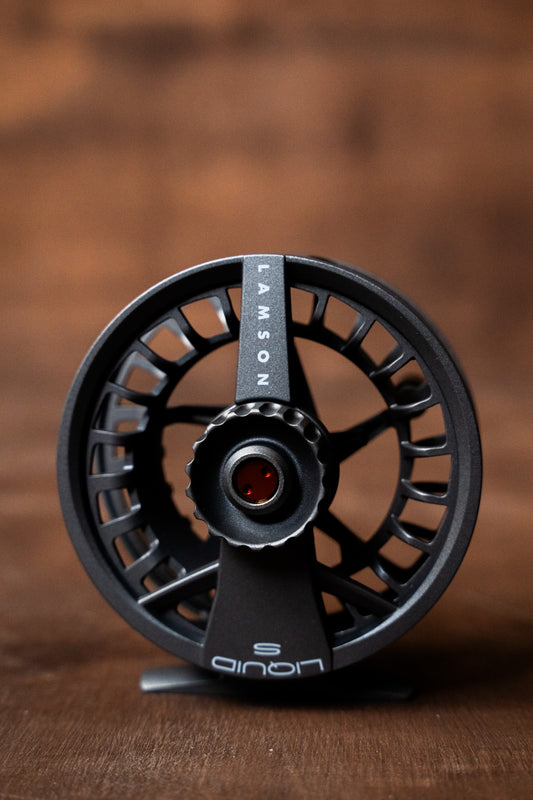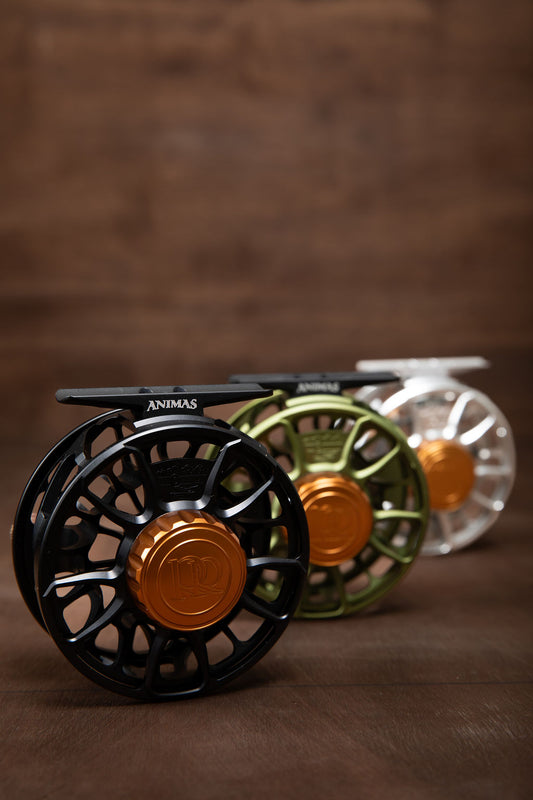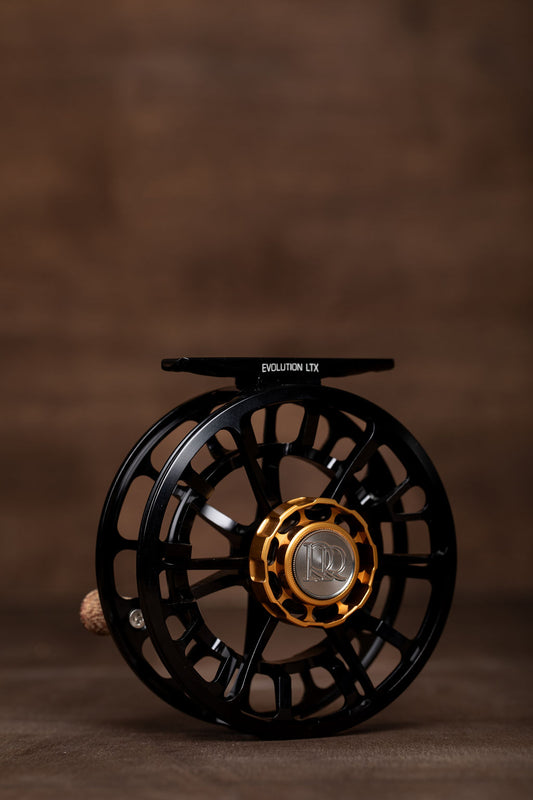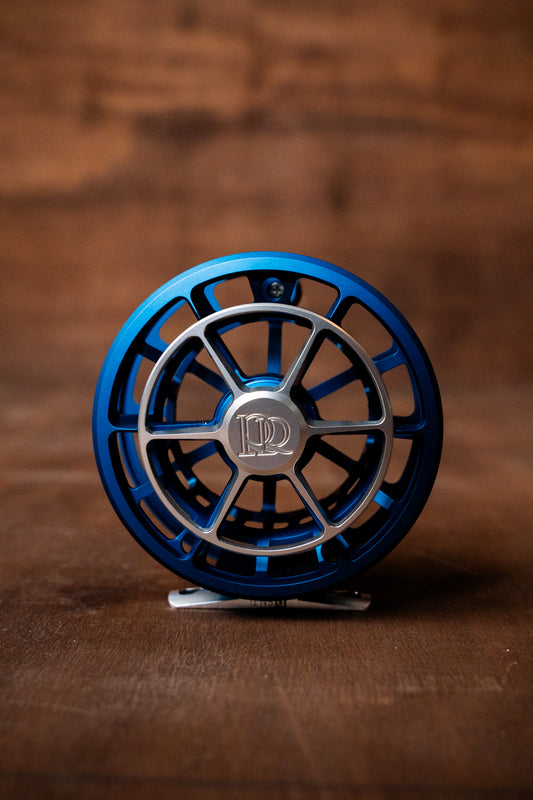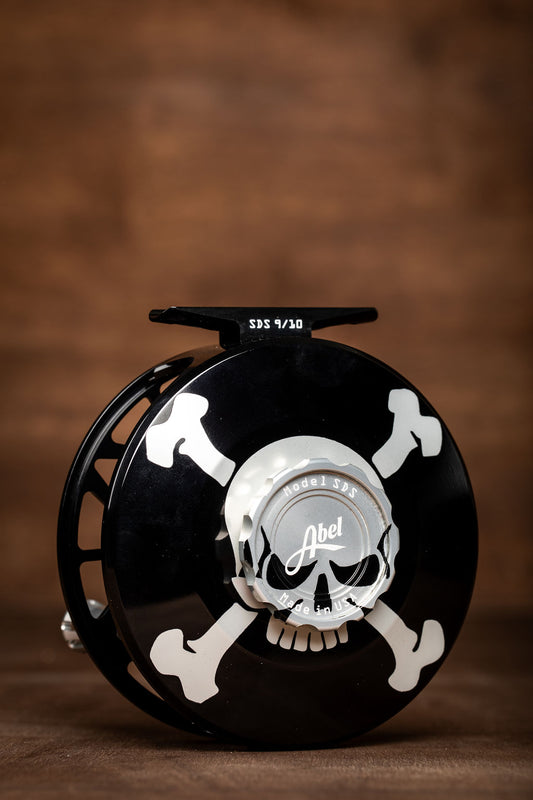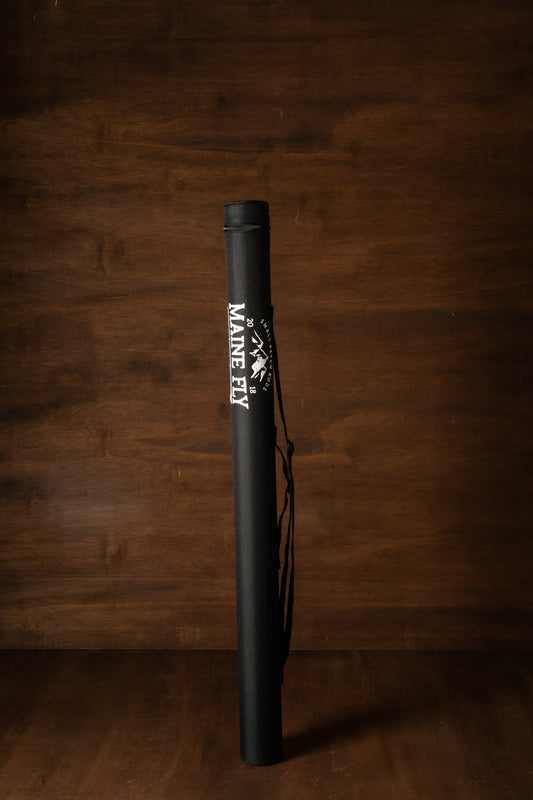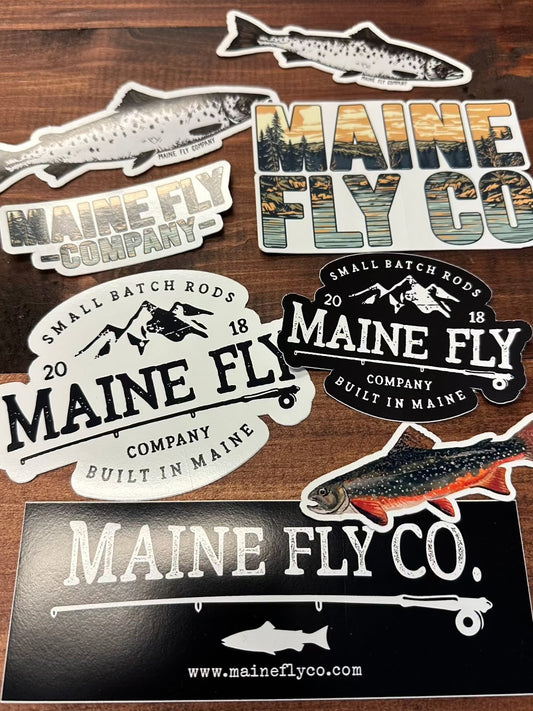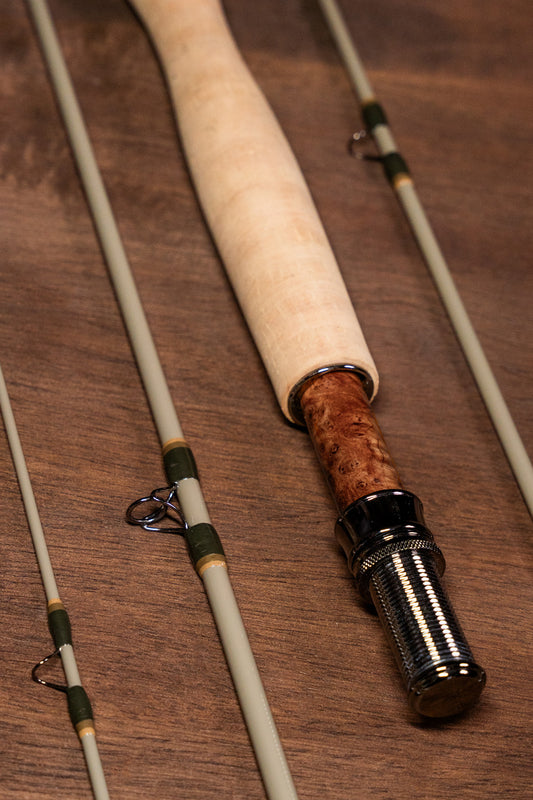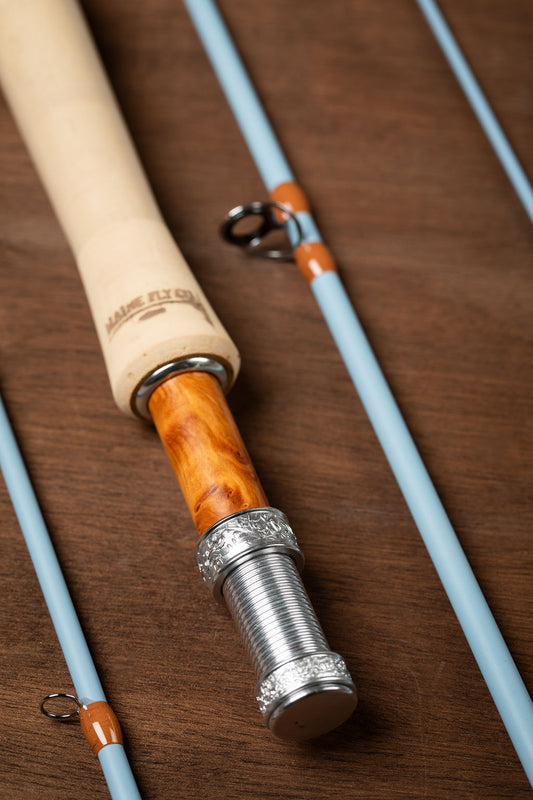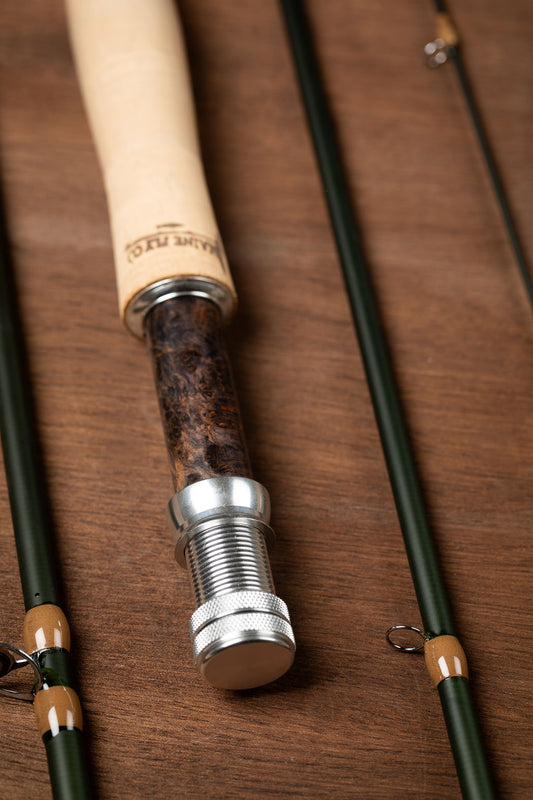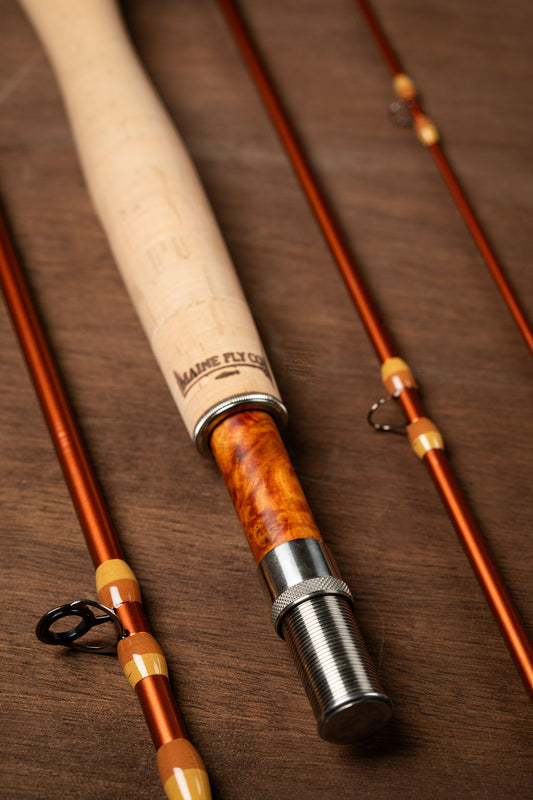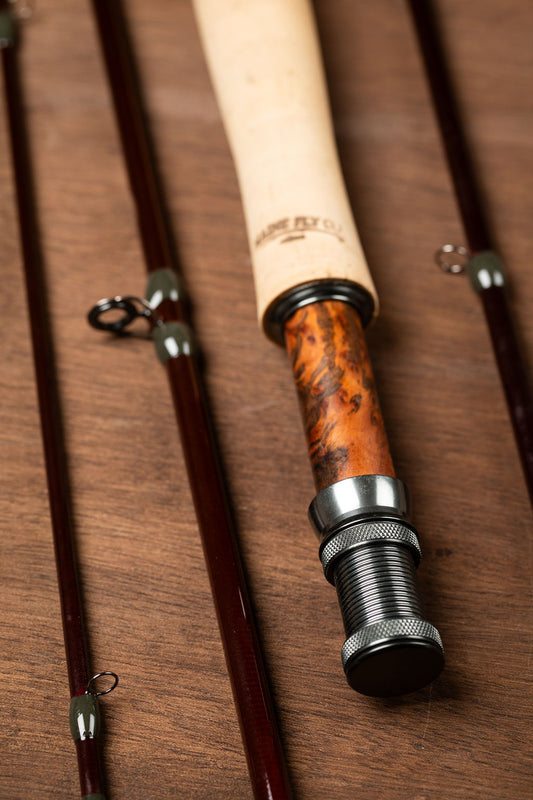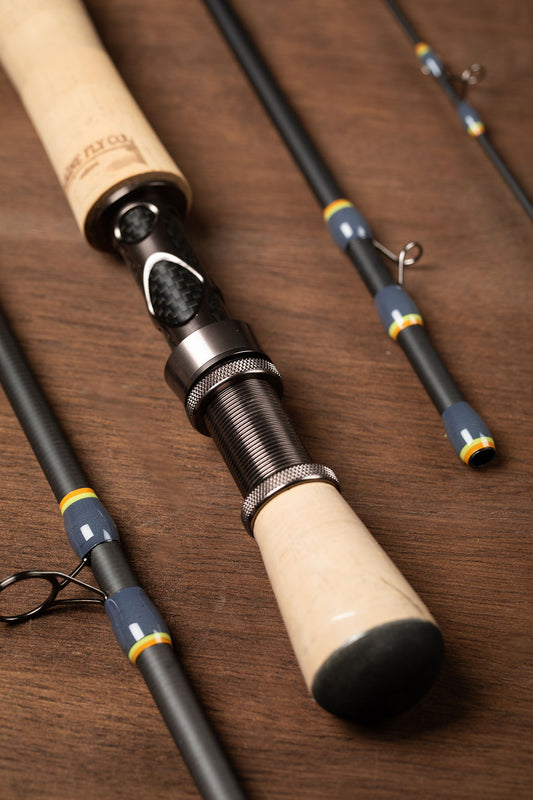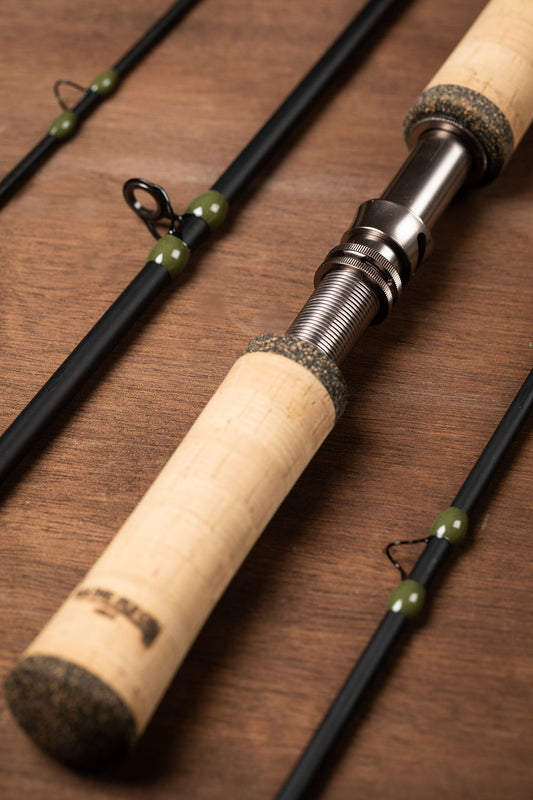The Moose River and our state animal the moose were the inspirations for this design. We knew we needed a 10’ but didn’t want to put ourselves in a box with a “nymph only” rod. While this one is deadly nymphing, its versatility and ability to throw any category of fly was an undeniable certainty during prototyping. The blanks maroon color evokes strength, and its dark green wraps symbolizes growth in the wild. A perfect pallet to represent the inspiration of our beloved moose and the amazing scenery on our favorite stretches of the Moose River.
- Fly Rods
- Small Batch
- The Moose River - 10’
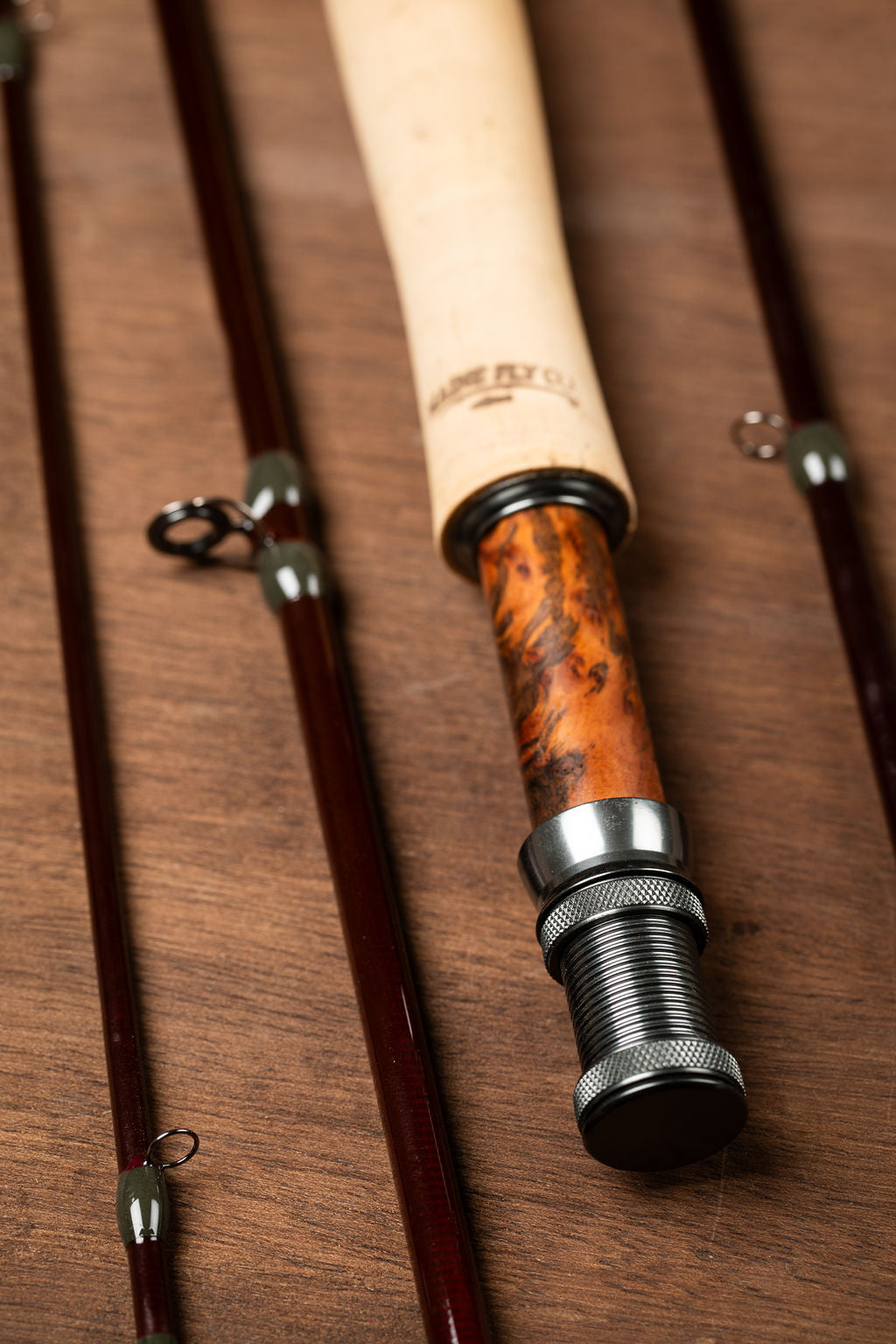
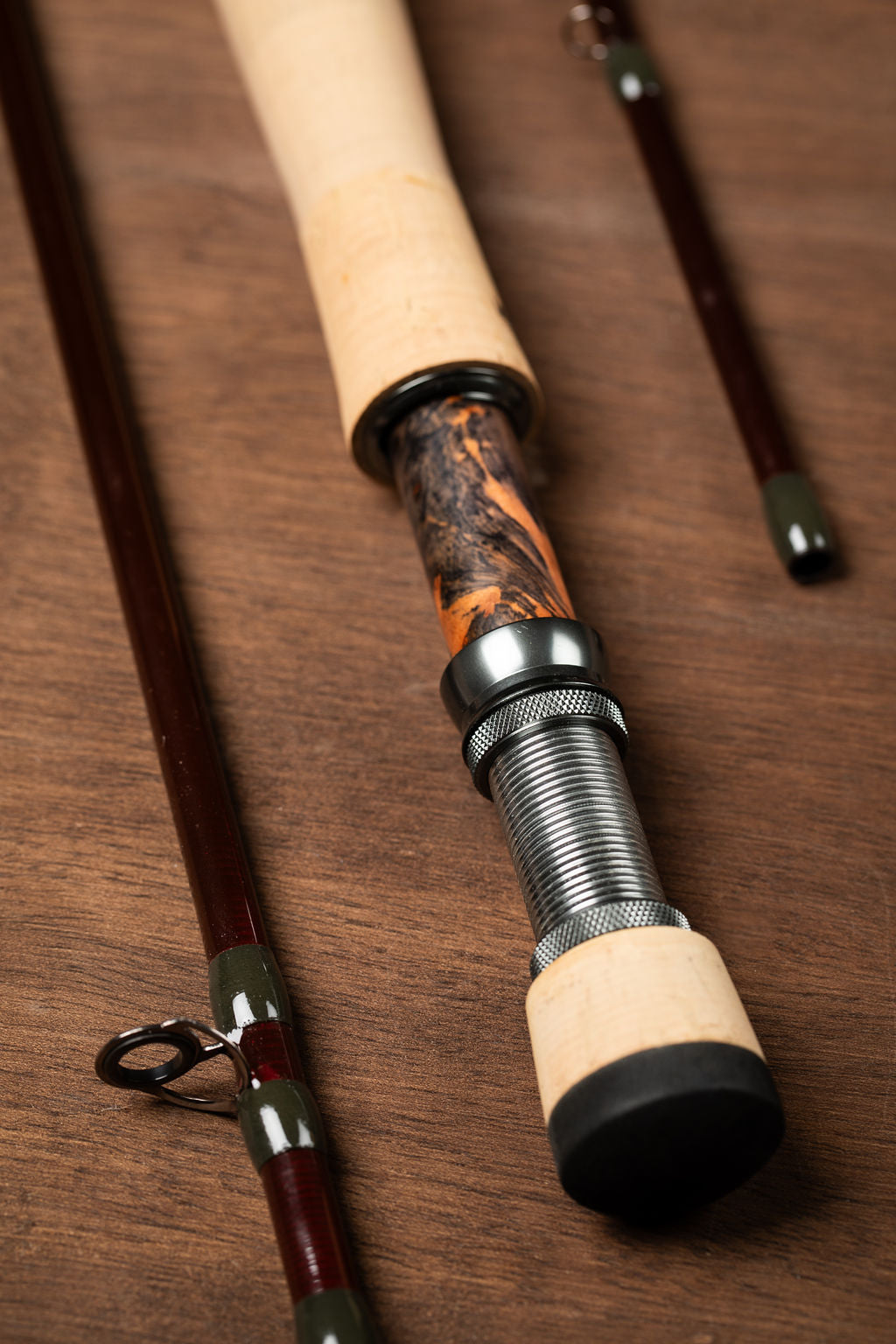
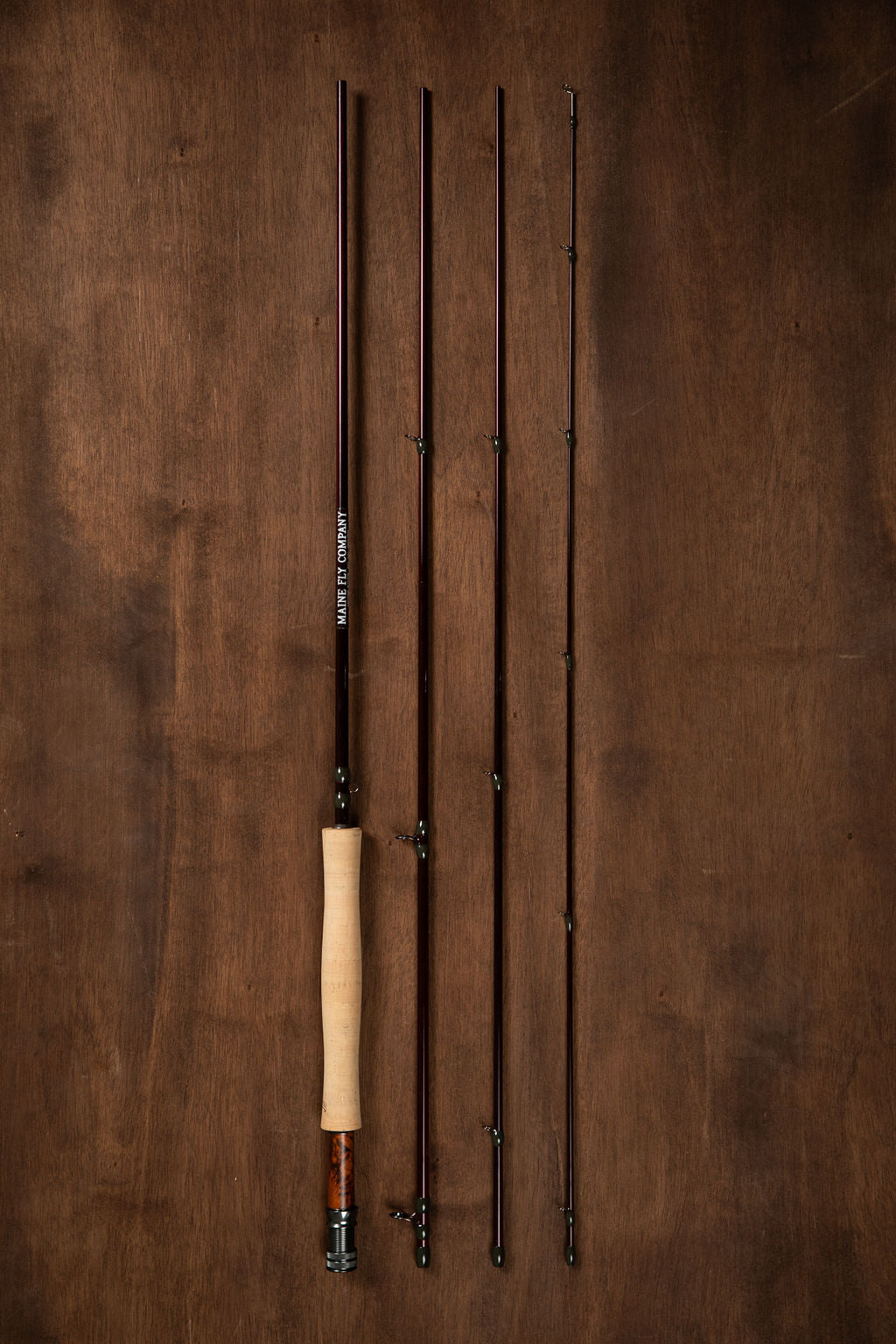
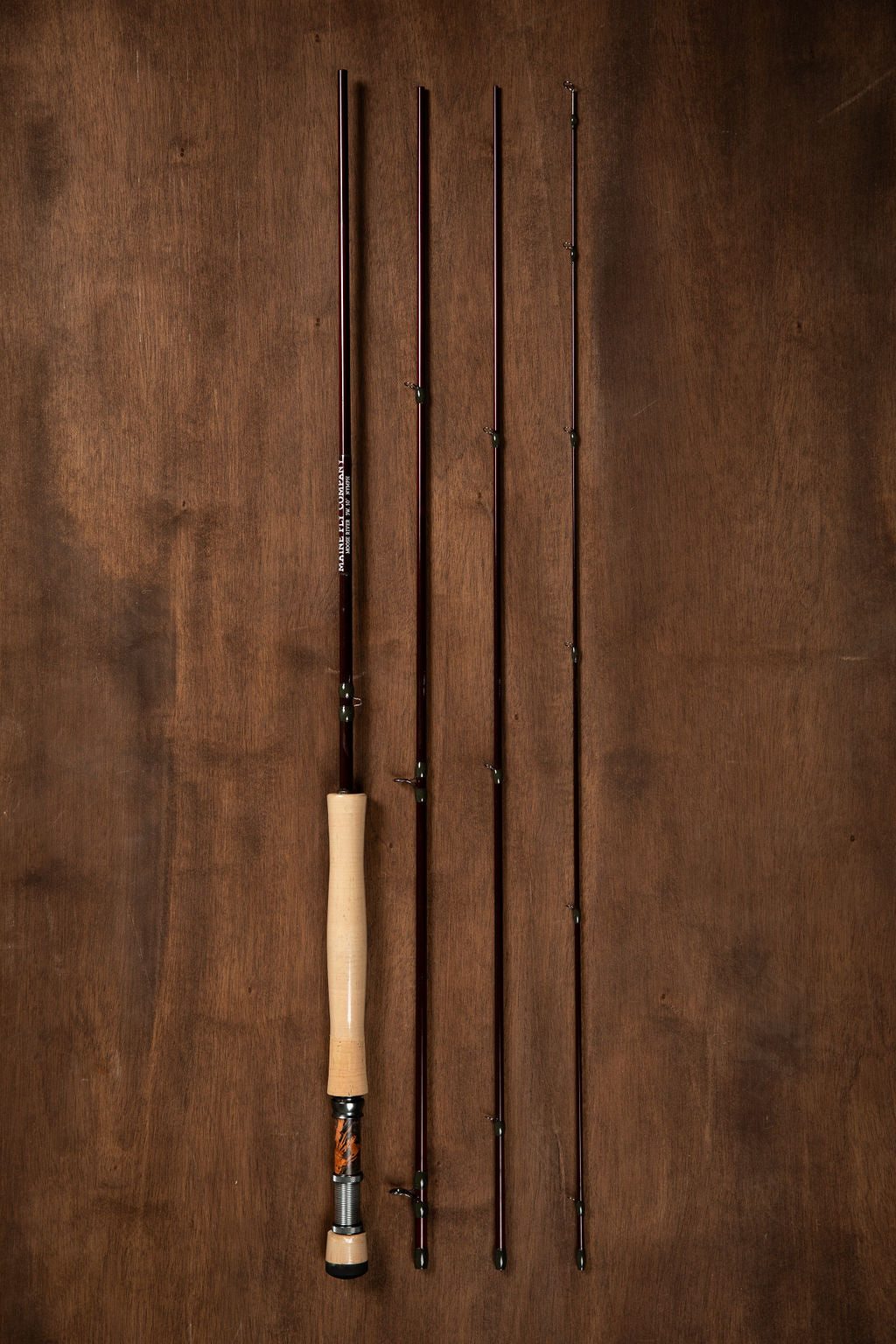
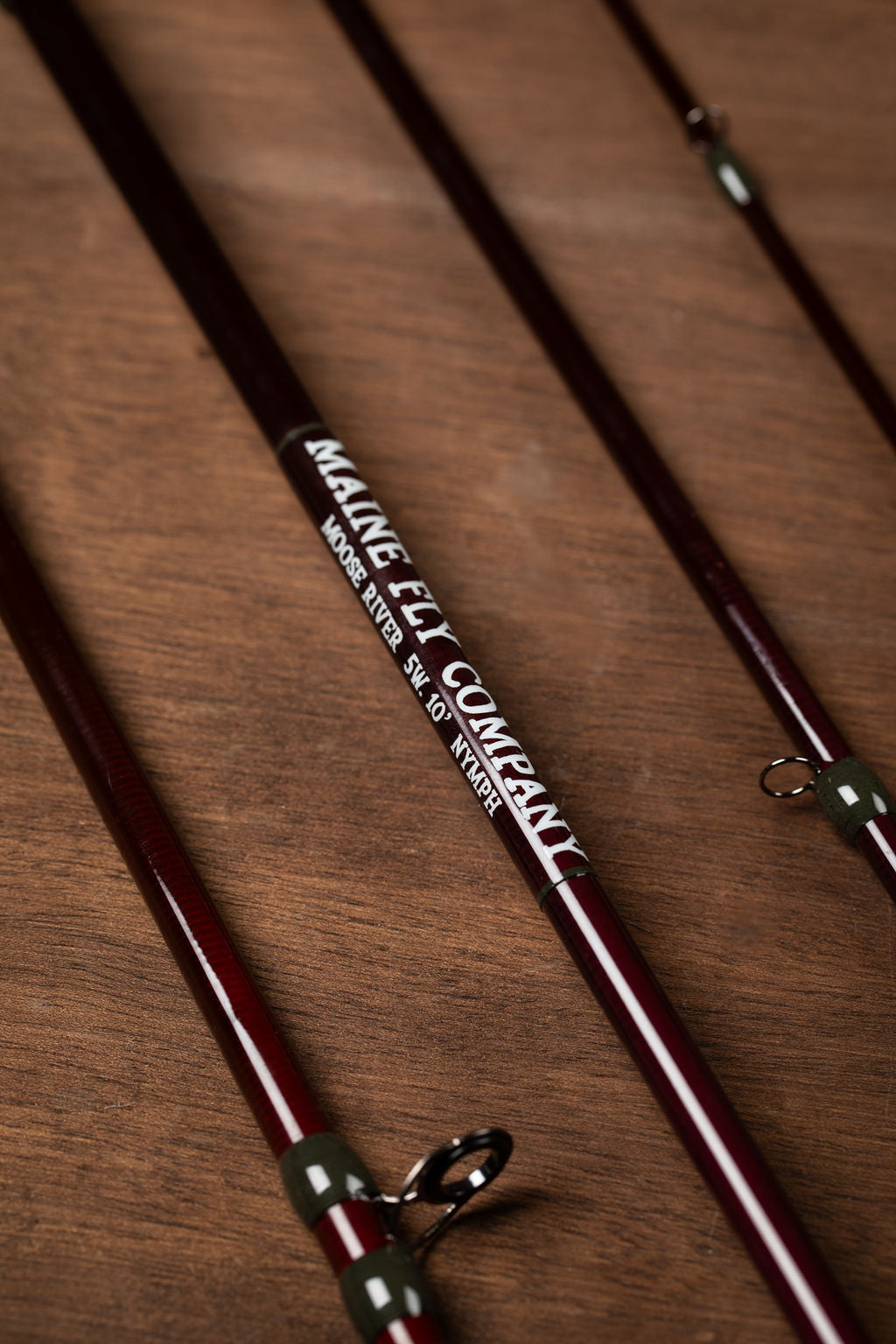









The Moose River - 10’
The Moose River - 10’
Our premier 10' fly rod. Whether you love to nymph, value the added length a 10' provides or want to reach the far banks with BIG casts, the Moose has been a solid performer from it first appearance in early 2020. We've bent them like rainbows only to release our catch and go back for more. An ABSOLUTE team favorite in our personal quivers!! Cast it or Nymph it, just be sure to grab one.


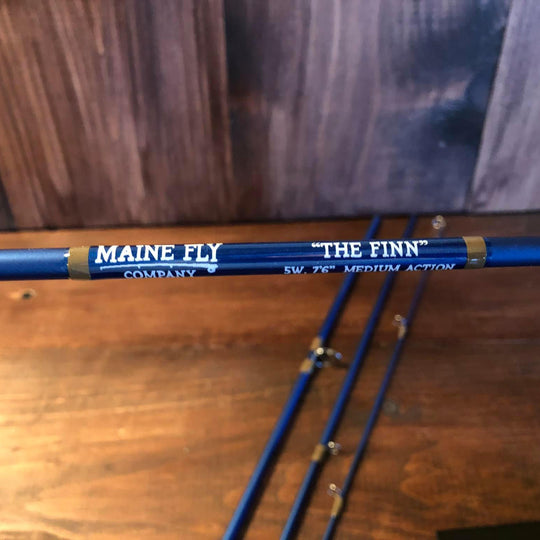
Disclaimer
Products shown here are only an example. Your product may differ.Add Personalization
$30.00Ordering personalization when you buy a Maine Fly Co fly rod adds a unique, meaningful touch to your gear. By including your name or a short phrase, like in the example "THE FINN," your rod becomes more than just a tool—it becomes a personal memento of your passion for fly fishing. The elegant font enhances the rod's aesthetic while making it easy to identify, especially on group outings. Whether it’s for yourself or as a gift, personalizing your fly rod transforms it into a lasting keepsake that celebrates your connection to the sport.
- Only available as an add-on when purchasing a rod
- Adding personalization will delay shipment by 5 business days
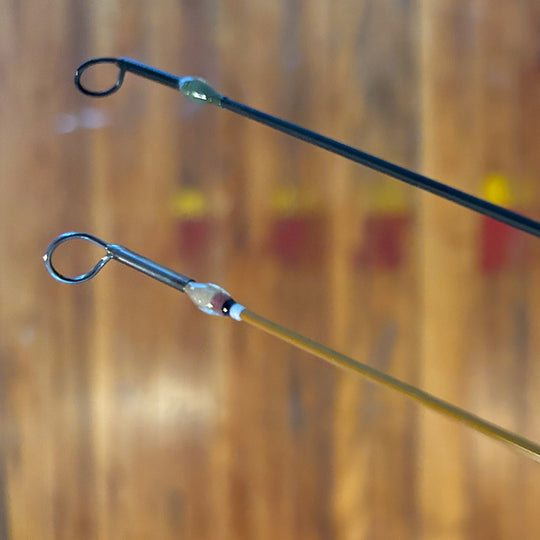
Disclaimer
Products shown here are only an example. Your product may differ.Add spare tip
$115.00When purchasing a fly rod from Maine Fly Co, it's smart to order a spare tip for added peace of mind. Fly rod tips are the most vulnerable part of the rod, often prone to accidental breakage from mishaps like snagging on brush or clumsy casting. Having a spare tip ensures you're not stuck without a functional rod during a fishing trip, saving you from the inconvenience and downtime of repairs. It’s a simple, cost-effective precaution that keeps you prepared and your fly fishing adventures uninterrupted.
- Only available as an add-on when purchasing a rod
- Adding personalization will delay shipment by 5 business days
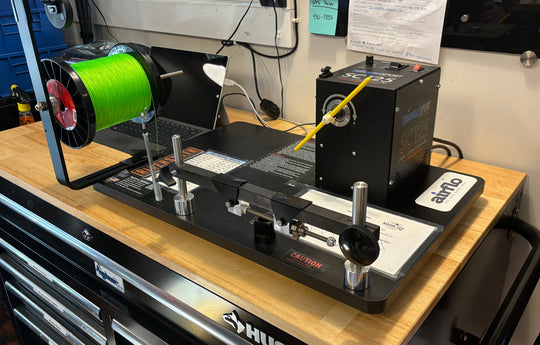
Disclaimer
Products shown here are only an example. Your product may differ.Add Backing
$8.00Just pay for the bench fee and we will spool your new reel with backing. Backing length added is per manufacturers suggested length. MFC uses 20lb Dacron is for fresh water rods and 30lb for salt water rods. If you have any special request, please call the shop following your order.
- Only available as an add-on when purchasing a reel
- Adding Backing may delay shipment by 2 business days
Disclaimer
Products shown here are only an example. Your product may differ.Lorem ipsum dolor sit amet, consectetur adipiscing elit. Sed tempor massa a pharetra laoreet. Praesent semper, nibh at volutpat iaculis, tellus ex eleifend tellus, vitae volutpat risus sem sit amet lacus. Integer imperdiet nibh eget varius dictum:
- Only available as an add-on when purchasing a rod
- Adding personalization will delay shipment by 5 business days
- Includes Maine Fly Company Rod Sock
- Fast and Free Shipping on Orders $100+
- Lifetime Warranty Learn More

Complete your Outfit
Compelete your outfit and receive complementary spooling and backing (a $24 value)
-
2024 Lamson Liquid S-Series (3w-8w)
Liquid S carries the Liquid name to a higher level.
Regular price $139.99$139.99 Regular priceUnit price / perSale price2/3/4wt 4/5/6wt 6/7/8wt -
Lamson Guru S
Rugged, fully machined, and ultra-reliable reel at a great price.
Regular price $299.99$299.99 Regular priceUnit price / perSale price2/3/4wt 4/5/6wt
Specifications
| Length | Line weight | # of pieces | Rod weight | Style | Type | Action | Price |
|---|---|---|---|---|---|---|---|
| 10 | 3wt | 4 | 3.7oz | Nymph - All Around | Freshwater | Moderate - 5.5 | $369.00 |
| 10 | 4wt | 4 | 3.8oz | Nymph - All Around | Freshwater | Moderate - 5.5 | $369.00 |
| 10 | 5wt | 4 | 3.9oz | Nymph - All Around | Freshwater | Moderate - 5.5 | $369.00 |
| 10 | 7wt | 4 | 4.5oz | Nymph - All Around | Freshwater | Moderate - 5.5 | $369.00 |
| 10 | 7wt | 4 | 4.9oz | Nymph - All Around | Freshwater | Moderate - 5.5 | $369.00 |
Rod Description
Lifetime Warranty
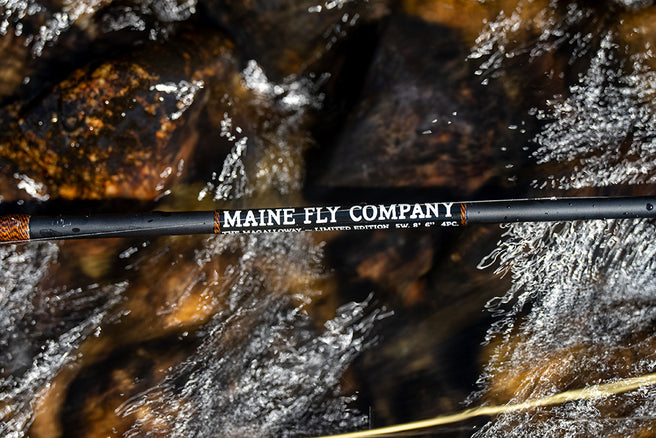
Lifetime Warranty
We are proud to stand behind all of our graphite and carbon fiber fly rods. All of our rods are backed by a lifetime guarantee against manufacturing defects in materials and workmanship for the original owner with proof of purchase.
About Small Batch
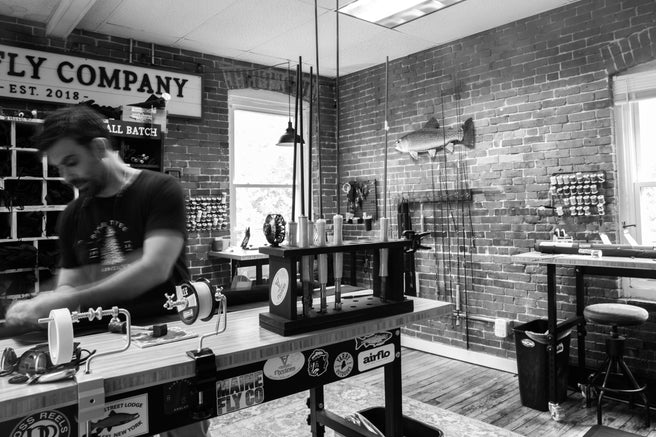
About Small Batch
Small Batch Fly Rods, Built in Maine, USA
Small batch fly rods are more personal; their inspiration, their designs, how they are crafted and the service we provide for the life of the rod.
We build every fly rod here as if it were our very own. The designs reflect our journeys and are personal to us. Our builders not only hand craft every rod, but they are also the very same people you can find along the river fishing them.
Small batch production allows for greater attention to detail and unique customization welcoming special requests to be sure your fly rod feels as personal to you as it was for us to build it. You and your fly rod aren’t just a number here. Your rod is carefully crafted with you in mind. That’s small batch.
We believe a fly rod should be as unique as the angler who uses it.
Inspiration
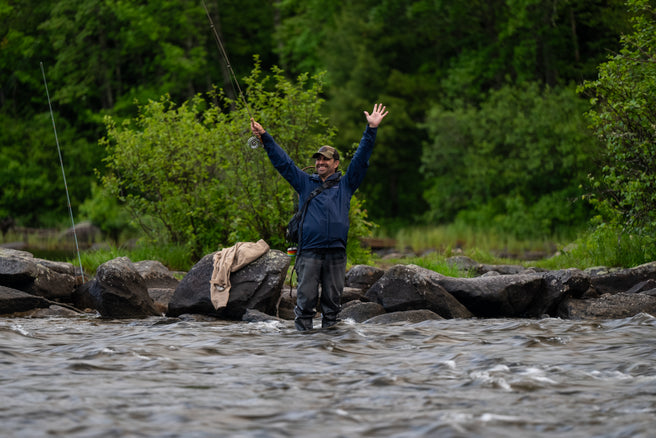
Inspiration
The Moose River in Maine is a fly fisher’s paradise, renowned for its stunning landscapes and abundant fish. Stretching through the heart of the northern wilderness, the river offers a unique combination of tranquil waters and exhilarating fishing opportunities. For anglers, using a 10-foot fly rod here can enhance the experience, providing an excellent balance of precision and power.
As you approach the river, the breathtaking views unfold before you. Towering pines line the banks, and the soft rustle of leaves creates a peaceful backdrop. The Moose River is fed by crystal-clear springs, making it a prime habitat for brook trout, brown trout, and even the occasional landlocked salmon. With its varied terrain, the river offers numerous fishing spots, from gentle riffles to deep pools, catering to different fishing styles and preferences.
When fly fishing on the Moose River, it’s essential to consider the seasonal changes. Spring brings melting snow and active fish eager to feed after the winter months. Early mornings and late afternoons are the prime times to cast your line. As the day warms, trout often seek shelter in cooler, shaded areas. A well-presented dry fly or a nymph can tempt these fish to rise from their hiding spots.
Casting with a 10-foot fly rod provides distinct advantages in this environment. The longer rod allows for better line control, making it easier to manage your fly on the water's surface. This is particularly helpful when casting to rising fish or navigating the currents. Additionally, the added length helps to keep your line off the water, reducing drag and increasing the chances of a successful catch.
Before heading out, ensure you have the right gear. Lightweight, breathable waders will keep you comfortable while allowing for easy movement. A selection of flies that mimic local insect life is crucial; consider using patterns like Adams, Elk Hair Caddis, or streamers to match the local forage.
As you stand on the banks of the Moose River, casting your line into the sparkling waters, you’ll feel a deep connection to nature. Each cast becomes a moment of meditation, a chance to escape the hustle of daily life and immerse yourself in the serene beauty of Maine’s wilderness. The Moose River isn’t just a destination; it’s an experience that every fly fisher should savor.
Use & Care
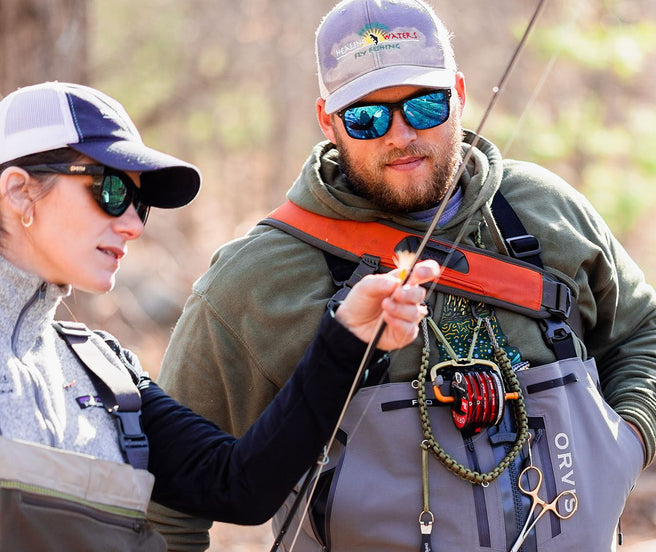
Use & Care
Always transport and store your new rod in its rod case. Most rods are broken during travel. Nothing ends a fly fishing trip faster than setting a heavy cooler on the top of a fly rod.
Take extra care when stringing your rod. Thread a look of fly line through the guides and tip top and pull the line and leader through without bending the rod.
When using weighted or large flies, adjust to an open casting stroke. (a fly hitting the rod can also damage the blank)
Avoid severe rod angles when fighting and landing fish. Snagged flies should be broken off by pulling on the line with the rod tip pointed directly at the snag.
Take the rod apart when you are done fishing to avoid stuck ferrules.
Completely air dry your rod and place it in a cloth bag and tube before storing. The rod tubes can trap moisture, which can swell reel seats and ruin the rod finish.
Rinse after each use and occasionally clean your rod with warm water and soap and completely dry.
Rod Action - 5.5
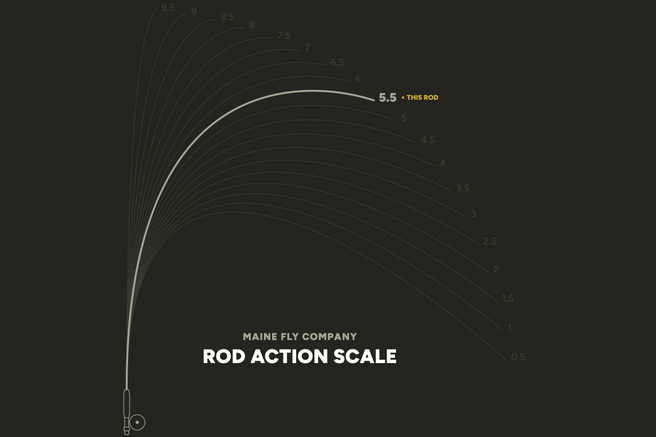
Rod Action - 5.5
Medium or Moderate Action
Medium action fly rods are the most versatile of the rods available. They perform well in a wide variety of conditions. They are also easier to learn with than with a fast-action rod. On the backcast with a medium action fly rod, the rod will be bent beginning from about halfway down the rod - thus falling in-between fast and slow action rods.
Overall, if an angler will only own one fly rod for freshwater trout fishing, then it should be a medium action fly rod unless the fishing situation falls into one of the other categories above or below.
“I just fished my new Moose River, and can't rave about it enough. The feel while nymphing was great. I was looking for a nymph rod that could also work as a dry fly rod, and I was blown away by how well it casted dries. Nice softer feel than others I have, but still enough backbone to cast to far off risers. ”Richard A.
As seen in

FAQ
What type of line goes well with the Moose River fly rod?
The type of line you use for this rod will be partially dependent on the fly placement you are trying to achieve. The rod can be used with floating line, streamer line or nymph lines where mending and big mends are required
What type of reel balances the Moose River rod?
Rod balancing isn’t black and white when it comes to a 10’ rod. The idea of a balanced rod reflects a rod tipping pint with reel and line attached. So depending your desired application for this rod can have some impact. For all around usage, any of our fresh water reels will do great with this one.
What does this rod come with?
All our small batch graphite/carbon fiber rods come in a canvas rod sock. There are 2 rod tube options available at checkout to help protect your investment.
Will you fix my rod if it breaks?
Of course! It’s one of the greatest things that makes us different. We build every one of our rods in our shop here, so naturally we can fix any of them too. Let’s face it, as heartbreaking as it can be, fly rods break. We offer repair for any of our rods and prioritize those orders to ensure that we get you back out there asap. Rod section prices vary, so just give us a call should anything go wrong out there, and we’ll help make you whole again.
Can I get an extra tip for this rod?
Yes. We now offer the option to purchase a spare tip when purchasing a new Maine Fly Co rod for that piece of mind.
You might also like
-
2024 Lamson Liquid S-Series (3w-8w)
Liquid S carries the Liquid name to a higher level.
Regular price $139.99$139.99 Regular priceUnit price / perSale price2/3/4wt 4/5/6wt 6/7/8wtLamson Guru S
Rugged, fully machined, and ultra-reliable reel at a great price.
Regular price $299.99$299.99 Regular priceUnit price / perSale price2/3/4wt 4/5/6wtRoss Animas
Ross design used and loved by more than 80,000 fly anglers
Regular price $385.00$385 Regular priceUnit price / perSale price4/5wt 5/6wt 7/8wt Click & Pawl
Click & PawlRoss - Colorado
Setting the bar for lightweight click pawl reels
Regular price $375.00$375 Regular priceUnit price / perSale price2/3wt 4/5wtAbel - SDF- 4/5 & 5/6- Native Trout
Hand-painted in a Native Trout Design
Regular price $1,520.00$1,520 Regular priceUnit price / perSale price4/5wt 5/6wtRoss - Evolution LTX
Defining the modern trout reel.
Regular price $475.00$475 Regular priceUnit price / perSale price3/4wt 4/5wt 5/6wt2024 Cheeky Preload 2.0 ~ 300 (2w-4w)
Lightweight, durable, affordable - performance fly reel.
Regular price $119.00$119 Regular priceUnit price / perSale price2/3/4wt2024 Cheeky Preload 2.0 ~ 350 (5w-6w)
Comes spooled up and ready to fish
Regular price $119.00$119 Regular priceUnit price / perSale price5/6wt2024 Cheeky Preload 2.0 ~ 375 (7w-8w)
Spooled up and ready to fish.
Regular price $119.00$119 Regular priceUnit price / perSale price7/8wt2024 Lamson Liquid Max, 8w or 10w
A bully and a beast of a reel.
Regular price $279.00$279 Regular priceUnit price / perSale price8wt 10wtCheeky Spray 400 7w-9w
A premium reel from Cheeky Fishing.
Regular price $449.00$449 Regular priceUnit price / perSale price7/8/9wtRoss - Evolution R Salt
Designed to stand up to anything the sea can throw at it.
Regular price $695.00$695 Regular priceUnit price / perSale price7/8wt 9/10wtAbel ~ SDS 9/10w - Skull & Crossbones
A unique multi-disc drag system.
Regular price $1,695.00$1,695 Regular priceUnit price / perSale price9/10wtAbel - SDF - 4/5 ~ Casey Underwood Edition " Mayfly Furry"
Regular price $1,020.00$1,020 Regular priceUnit price / perSale price4/5wt -
Scientific Angler- Amplitude Smooth Infinity
Regular price $99.99$99.99 Regular priceUnit price / perSale price4wt 5wt 5wt 6wt 6wt 7wt 7wtScientific Angler-Amplitude Smooth Anadro Indicator
Regular price $99.99$99.99 Regular priceUnit price / perSale priceScientific Angler - Amplitude Smooth Creek Trout
Regular price $99.99$99.99 Regular priceUnit price / perSale priceAirflo- Superflo Ridge 2.0 "Tactical Taper"
Regular price $129.99$129.99 Regular priceUnit price / perSale priceAirflo- Superflo Universal Taper
Regular price $100.00$100 Regular priceUnit price / perSale priceAirflo Superflo Ridge 2.0 - Universal Taper - NEW 2024
Regular price $129.99$129.99 Regular priceUnit price / perSale priceAirflo - Superflo , Nymph /Indicator
Regular price $99.99$99.99 Regular priceUnit price / perSale priceAirflo - Superflo Ridge 2.0 Streamer Max Short
Regular price $129.99$129.99 Regular priceUnit price / perSale priceAirflo- Superflo Power Taper
Regular price $100.00$100 Regular priceUnit price / perSale priceScientific Angler -Sonar Titan Full Intermediate
Regular price $99.99$99.99 Regular priceUnit price / perSale priceScientific Angler - Sonar Triple Density I/3/5
Regular price $0.00$0 Regular priceUnit price / perSale priceAirflo - Cold Saltwater (Intermediate)
Regular price $90.00$90 Regular priceUnit price / perSale priceCheeky- All Day Fly Line
Regular price $59.00$59 Regular priceUnit price / perSale priceCheeky All Day Sink Tip Fly Line
Regular price $59.00$59 Regular priceUnit price / perSale priceAirflo- Polyleader Plus / Trout
Regular price $18.00$18 Regular priceUnit price / perSale priceAirflo- Polyleader / 5' Trout
Regular price $10.00$10 Regular priceUnit price / perSale priceAirlflo- Polyleader / 10' Trout
Regular price $14.00$14 Regular priceUnit price / perSale priceAirflo- Tactical Mono Tapered Leader - 7.5'
Regular price $6.99$6.99 Regular priceUnit price / perSale priceAirflo- Tactical Mono Tapered Leader - 9'
Regular price $6.99$6.99 Regular priceUnit price / perSale priceAirflo- G5 Fluorocarbon Tapered Leader - 9'
Regular price $16.99$16.99 Regular priceUnit price / perSale priceFreshwater Leaders - 3~pack
Regular price $10.00$10 Regular priceUnit price / perSale priceAIRFLO - Premium Nylon Tippet - 50M
Regular price $12.99$12.99 Regular priceUnit price / perSale priceAirflo -Fluorocarbon Tippet
Regular price $16.99$16.99 Regular priceUnit price / perSale priceAirflo- Premium Fluorcarbon Tippet
Regular price $29.99$29.99 Regular priceUnit price / perSale priceCheeky- Freshwater Tippet
Regular price $6.00$6 Regular priceUnit price / perSale priceCheeky- Saltwater Tippet
Regular price $6.00$6 Regular priceUnit price / perSale priceCheeky - Salt Water Fluorocarbon Tippet
Regular price $16.00$16 Regular priceUnit price / perSale priceSaltwater Leaders (3 pack)
Regular price $10.00$10 Regular priceUnit price / perSale price -
MFC Rogue Nipper - New 2024!
Regular price $8.00$8 Regular priceUnit price / perSale priceMFC Line Nipper - New 2024!
Regular price $7.00$7 Regular priceUnit price / perSale priceMFC Hedger Clamp - New 2024!
Regular price $18.00$18 Regular priceUnit price / perSale priceMFC Soft Grip Forcep - NEW 2024!
Regular price $15.00$15 Regular priceUnit price / perSale priceMaine Fly Co Fly Box
Double sided waterproof fly box.
Regular price $14.99$14.99 Regular priceUnit price / perSale priceMaine Fly Co Fly Streamer Box
Waterproof seal to keep the contents bone dry.
Regular price $17.99$17.99 Regular priceUnit price / perSale price Handcrafted
HandcraftedHandcrafted Wooden Fly Box
Red Cedar or Maple Burl wooden fly box.
Regular price $59.99$59.99 Regular priceUnit price / perSale price Handcrafted
HandcraftedHand Crafter "Puck" Wooden Fly Box
Each box is handmade and varies in wood grain.
Regular price $59.99$59.99 Regular priceUnit price / perSale priceMaine Fly Co Rod Tube
Our tubes are rugged and can be counted on to keep your rod safe.
Regular price $30.00$30 Regular priceUnit price / perSale priceAluminum Collectors Edition Rod Tube
An absolute staple for protecting your new fly rod.
Regular price $49.99$49.99 Regular priceUnit price / perSale price Handcrafted
HandcraftedHandcrafted Hardwood Rod Tubes
Hand Crafted in Lubec, Maine
Regular price $365.00$365 Regular priceUnit price / perSale price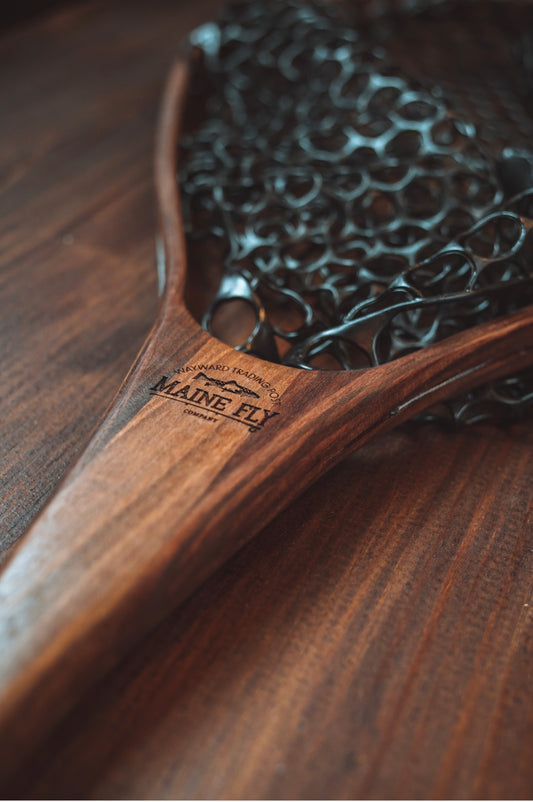 Handcrafted
HandcraftedHand Crafted Landing Nets
A stunning handcrafted net collaboration between Wayward Trading Co. and MFC.
Regular price $174.99$174.99 Regular priceUnit price / perSale priceRecycled Fly Line Bracelet ~ Flyvines
Regular price $11.99$11.99 Regular priceUnit price / perSale priceChums Flyvines Recycled Fly Line Sunglass Retainer
Regular price $13.99$13.99 Regular priceUnit price / perSale priceGuide Laces- 6 Color Options!
Regular price $10.00$10 Regular priceUnit price / perSale priceMaine Fly Co - Hydroflask 32oz
Classic Hydroflask, Maine Fly Company style!
Regular price $46.99$46.99 Regular priceUnit price / perSale priceAir-Lock - Strike Indicators- Assorted Colors
Regular price $7.99$7.99 Regular priceUnit price / perSale priceAir-Lock - 3 Pack, 3/4" - Camo!
Regular price $7.99$7.99 Regular priceUnit price / perSale priceUtility Wallet- 3 colors
Regular price $24.00$24 Regular priceUnit price / perSale priceNew for 2022 ~ Utility Pouch
Regular price $37.00$37 Regular priceUnit price / perSale priceLoon- Camo Drops 4 Division (Skinny Water)
Regular price $13.50$13.50 Regular priceUnit price / perSale priceLoon- Camo Drops 4 Division (Big Water)
Regular price $13.50$13.50 Regular priceUnit price / perSale priceConvertible Utility Pack
Regular price $172.00$172 Regular priceUnit price / perSale priceRiversmith - River Quiver, Two Banger
Carries 2 Rods up to 10-foot 4-inch in length
Regular price $499.99$499.99 Regular priceUnit price / perSale priceRiversmith - River Quiver, Four Banger
Carries 4 Rods up to 10-foot 4-inch in length
Regular price $759.99$759.99 Regular priceUnit price / perSale price -
Maine Fly Co - Multicam Trucker Hat
Made from USA milled NYCO ripstop fabric
Regular price $34.99$34.99 Regular priceUnit price / perSale priceMaine Fly Co - Leather Patch Hat
Maine Fly Company tested and approved!!
Regular price $32.00$32 Regular priceUnit price / perSale price Best Seller
Best SellerMaine Fly Co - Waxed Canvas Pioneer Hat
Our best selling hat to date!
Regular price $39.99$39.99 Regular priceUnit price / perSale priceLandlocked Salmon - Rope Hat
A classic snap back rope hat.
Regular price $34.99$34.99 Regular priceUnit price / perSale priceMaine Fly Co - Riverside Rope Hat
Look fly while riverside and beyond.
Regular price $34.99$34.99 Regular priceUnit price / perSale priceMaine Fly Co - Leather Patch Beanie
Hand stitched in Maine, USA
Regular price $26.00$26 Regular priceUnit price / perSale priceMaine Fly Co - T-Shirt
Soon to be your favorite t-shirt.
Regular price $24.99$24.99 Regular priceUnit price / perSale priceSmall Batch Fly Rods T-Shirt
Quality over quality, these are SOFT
Regular price $26.99$26.99 Regular priceUnit price / perSale price New
NewMoose T-Shirt
Two of our favorites, Moose and Salmon.
Regular price $24.99$24.99 Regular priceUnit price / perSale priceLandlocked Salmon T-Shirt
The most comfortable t-shirt you’ll own.
Regular price $26.99$26.99 Regular priceUnit price / perSale price Just for Kids
Just for KidsMaine Fly Co - Kids T-shirt
Just for your mini
Regular price $14.99$14.99 Regular priceUnit price / perSale priceMaine Fly Co - Team Hoodie, Sweatshirt
A team favorite all year long.
Regular price $46.99$46.99 Regular priceUnit price / perSale priceMaine Fly Co - Hydroflask 32oz
Classic Hydroflask, Maine Fly Company style!
Regular price $46.99$46.99 Regular priceUnit price / perSale priceSticker Bundle
Four randomly selected stickers.
Regular price $11.00$11 Regular priceUnit price / perSale price
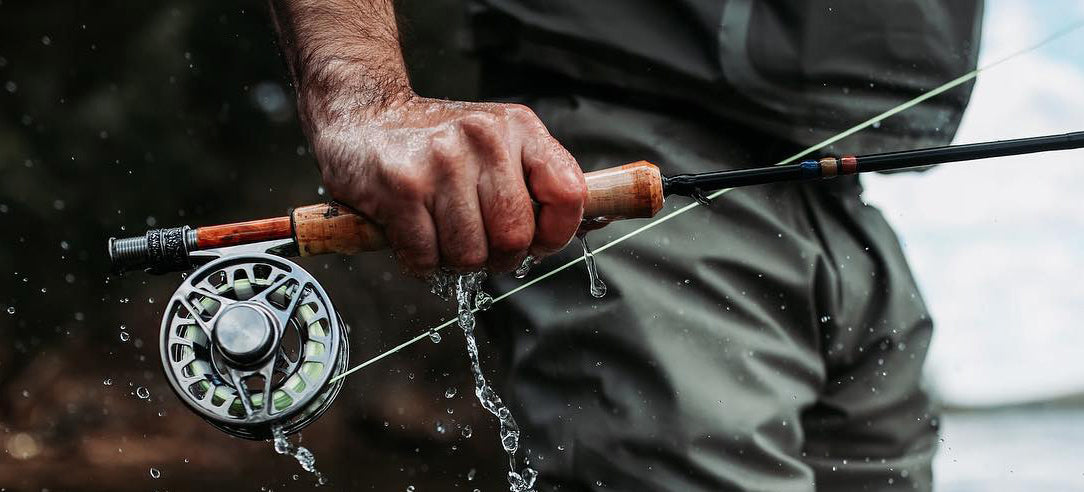
Fly Rods 101
There are a few fundamentals you should know in choosing the right fly rod for you.
Not the perfect fit?
-
The Roach River ~ Cast & Blast Edition (Limited- 9/5/24- 10/30/24)
A stunning hybrid 9’6” rod with craftsmanship in mind
Regular price $499.99$499.99 Regular priceUnit price / perSale priceThe Fish River - 9'
Our premium freshwater fly rod built for all conditions.
Regular price $459.00$459 Regular priceUnit price / perSale price4wt 5wt 6wtThe Little River - 6'6" or 7'9"
The small stream rod every angler should own
Regular price $319.00$319 Regular priceUnit price / perSale price2wt 3wtThe Carrabassett - 8'
Our lightest fly rod to date armed with laser precision
Regular price $369.00$369 Regular priceUnit price / perSale price4wt 5wt 6wt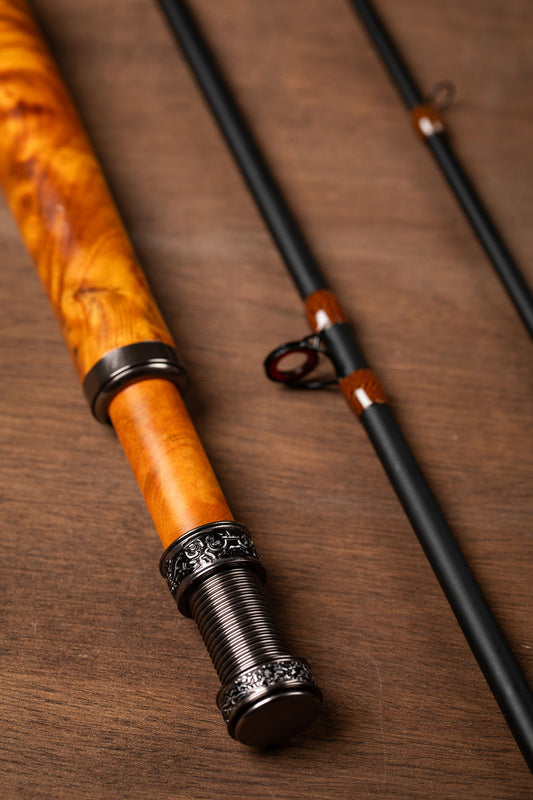 Burl Edition
Burl EditionThe Magalloway - 8'6"
A stunner in both design and performance.
Regular price $469.00$469 Regular priceUnit price / perSale price5wtThe Kennebec - 9'
A staple fly rod for all ability levels
Regular price $349.00$349 Regular priceUnit price / perSale price4wt 5wt 6wtThe Dead River - 9'
Undeniable value for a hand crafted rod
Regular price $309.99$309.99 Regular priceUnit price / perSale price5wt 7wt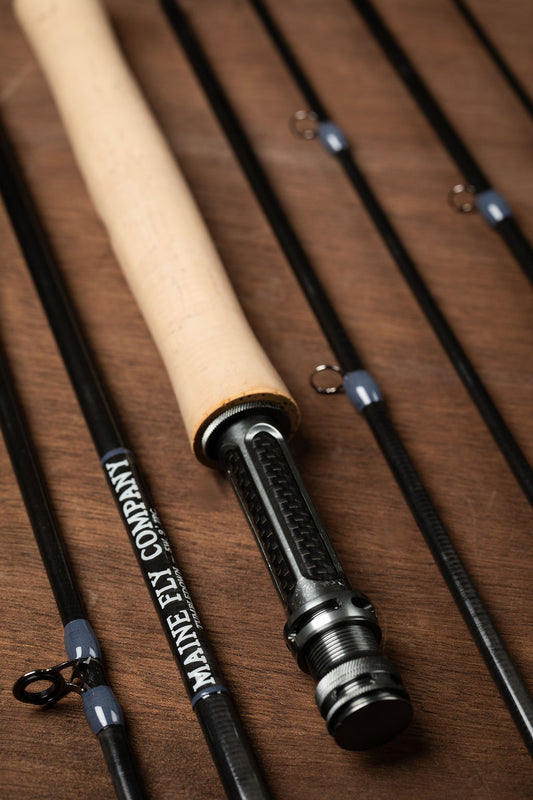 7-PIECE PACKABLE
7-PIECE PACKABLETumbledown - 9'
Our 7 piece packable adventure rod
Regular price $369.00$369 Regular priceUnit price / perSale price5wt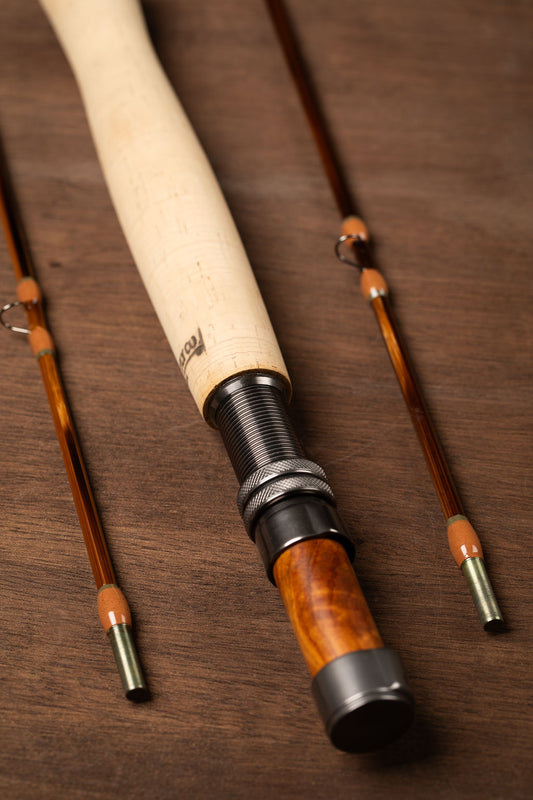 BAMBOO
BAMBOOThe St. John - 7' or 7'6"
A dreamy cane rod at an unrivaled value
Regular price $1,699.99$1,699.99 Regular priceUnit price / perSale price4wt 5wtThe Roach River - 9'6"
A stunning hybrid 9’6” rod with craftsmanship in mind
Regular price $459.00$459 Regular priceUnit price / perSale price4wt 5wt 7wt Euro - Nymph
Euro - NymphThe Wild - 10'
A high-sticking tight line nymphing dream rod
Regular price $439.00$439 Regular priceUnit price / perSale price3wt 4wt 5wt 6wtThe Moose River - 10’
An incredibly versatile 10’ option
Regular price $369.00$369 Regular priceUnit price / perSale price3wt 4wt 5wt 7wt 7wtThe Penobscot Bay - 9'
The last big game fly rod you’ll ever need
Regular price $489.00$489 Regular priceUnit price / perSale price7wt 8wt 9wtThe Casco Bay - 9'
A staple saltwater rod for all abilities
Regular price $399.00$399 Regular priceUnit price / perSale price8wt 9wt 10wtThe Dead River~(SWITCH) 10'6" & 11' 3w, 4w or 5w
Regular price $479.00$479 Regular priceUnit price / perSale price -
The Roach River ~ Cast & Blast Edition (Limited- 9/5/24- 10/30/24)
A stunning hybrid 9’6” rod with craftsmanship in mind
Regular price $499.99$499.99 Regular priceUnit price / perSale priceThe Fish River - 9'
Our premium freshwater fly rod built for all conditions.
Regular price $459.00$459 Regular priceUnit price / perSale price4wt 5wt 6wtThe Little River - 6'6" or 7'9"
The small stream rod every angler should own
Regular price $319.00$319 Regular priceUnit price / perSale price2wt 3wtThe Carrabassett - 8'
Our lightest fly rod to date armed with laser precision
Regular price $369.00$369 Regular priceUnit price / perSale price4wt 5wt 6wt Burl Edition
Burl EditionThe Magalloway - 8'6"
A stunner in both design and performance.
Regular price $469.00$469 Regular priceUnit price / perSale price5wtThe Kennebec - 9'
A staple fly rod for all ability levels
Regular price $349.00$349 Regular priceUnit price / perSale price4wt 5wt 6wtThe Dead River - 9'
Undeniable value for a hand crafted rod
Regular price $309.99$309.99 Regular priceUnit price / perSale price5wt 7wt 7-PIECE PACKABLE
7-PIECE PACKABLETumbledown - 9'
Our 7 piece packable adventure rod
Regular price $369.00$369 Regular priceUnit price / perSale price5wt BAMBOO
BAMBOOThe St. John - 7' or 7'6"
A dreamy cane rod at an unrivaled value
Regular price $1,699.99$1,699.99 Regular priceUnit price / perSale price4wt 5wtThe Roach River - 9'6"
A stunning hybrid 9’6” rod with craftsmanship in mind
Regular price $459.00$459 Regular priceUnit price / perSale price4wt 5wt 7wt Euro - Nymph
Euro - NymphThe Wild - 10'
A high-sticking tight line nymphing dream rod
Regular price $439.00$439 Regular priceUnit price / perSale price3wt 4wt 5wt 6wtThe Moose River - 10’
An incredibly versatile 10’ option
Regular price $369.00$369 Regular priceUnit price / perSale price3wt 4wt 5wt 7wt 7wtThe Penobscot Bay - 9'
The last big game fly rod you’ll ever need
Regular price $489.00$489 Regular priceUnit price / perSale price7wt 8wt 9wtThe Casco Bay - 9'
A staple saltwater rod for all abilities
Regular price $399.00$399 Regular priceUnit price / perSale price8wt 9wt 10wtThe Dead River~(SWITCH) 10'6" & 11' 3w, 4w or 5w
Regular price $479.00$479 Regular priceUnit price / perSale price
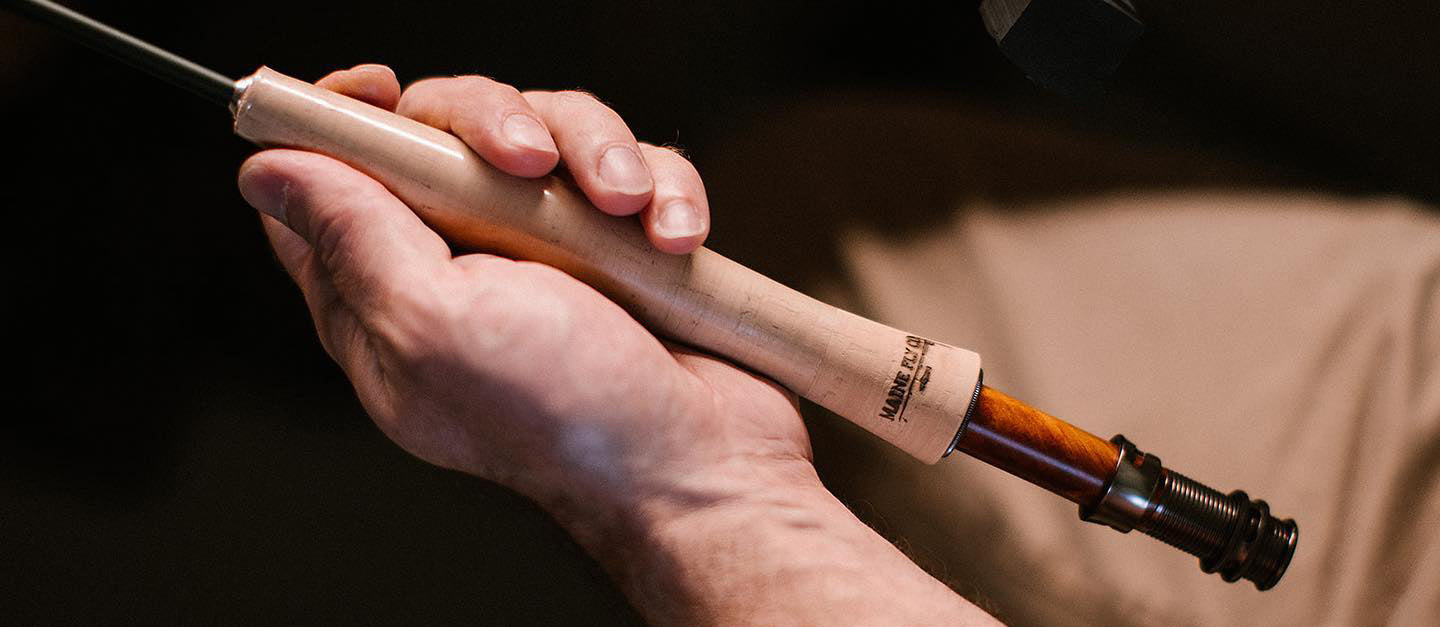
Lifetime Guarantee
We are proud to confidentially offer a lifetime guarantee on all our graphite and carbon fiber fly rods.
